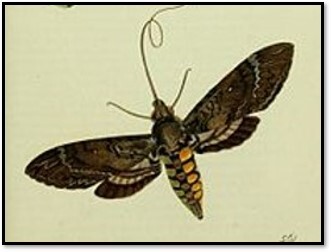Animals are driven to move, seek food resources, or find mates based upon their physiological needs at a given time. These physiological needs are embedded in biochemical changes within the animal. In collaboration with the Core Facilities at Georgia Tech, this project seeks to understand how biochemical changes in the brain and the thorax of the hawkmoth, Manduca sexta, contribute to, or underscore food-seeking and flight behaviors.
To feed, M. sexta will fly towards a food source using a combination of sensory cues to track, hover, and extend their proboscis to feed from flowers. How might key neuromodulatory substances change in concentration throughout this task? What are the biochemical changes present in the brain and the thorax that may be different between a moth that is actively hovering and feeding, versus a moth that is inactive? By answering these questions, we can better understand the physiological context behind these behaviors.
